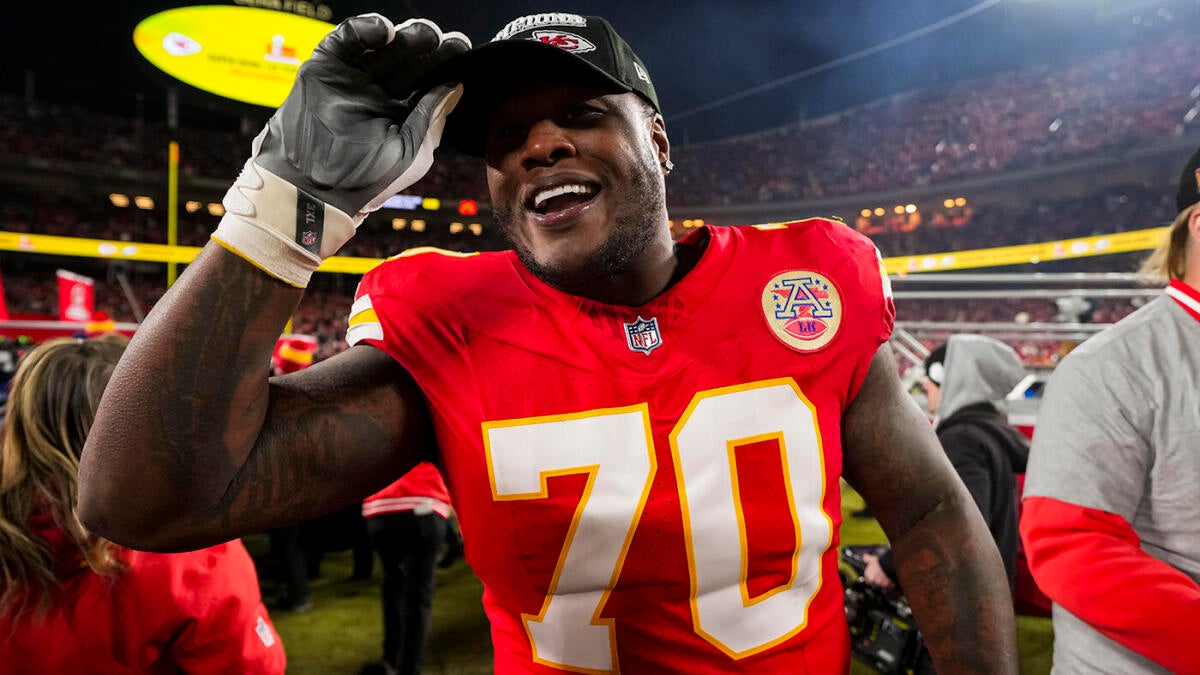The Shifting Landscape of NFC West: Why Former Pro Bowlers Prefer the Rams Over the 49ers
The NFL offseason rarely lacks drama, but the recent trend of notable former Pro Bowlers moving towards the Los Angeles Rams rather than the San Francisco 49ers weaves a compelling story beyond contracts. This movement reflects deeper strategic decisions, financial maneuvering, and evolving team visions within two powerhouse rivals in the NFC West. Understanding the forces behind these choices offers insight into the NFL’s current and future competitive dynamics.
The D.J. Humphries Saga: A Microcosm of Missed Opportunities
D.J. Humphries stands as a prominent emblem of this drama. Once all but signed by the 49ers in April, Humphries pivoted to the Rams, signaling much more than just individual preference. As a former first-round pick and Pro Bowler, his value is indisputable—strengthening an offensive line is no small matter in the NFL. That the 49ers failed to finalize the deal invites questions: Were financial terms not enticing enough? Did the team’s organizational trajectory appear unclear or unstable? Whatever the specifics, Humphries’ shift reveals cracks in the 49ers’ approach to sealing high-impact talent.
For the Rams, his acquisition is more than filling a position; it is a statement of intent. Successfully attracting a player of Humphries’ caliber reinforces their image as a destination team, creating momentum that can ripple through future recruitment. Conversely, the 49ers must grapple with letting key additions slip through their fingers due to negotiation or strategic missteps.
What Makes the Rams a Magnet for Talent?
A slew of former 49ers and free agents gravitating to the Rams warrants a deeper look into organizational appeal. Several factors elevate Los Angeles in the eyes of top players:
– Championship Pedigree and Stability: Winning the Super Bowl in 2021 grants the Rams undeniable credibility. Prospective signees often prioritize joining teams with a realistic shot at titles, and the Rams’ recent success provides that allure.
– Lucrative and Secure Contracts: The Rams have demonstrated their readiness to back talent with compelling financial packages. The $51 million contract with $34 million guaranteed to Pro Bowler Jonah Jackson showcases an aggressive willingness to invest. Such commitments can be decisive when players weigh options.
– Flexible Cap Management and Roster Strategy: Contrasting with the 49ers’ caution, the Rams appear to embrace a bolder approach, balancing cap space to enable big moves while maintaining competitive depth. This dynamic facilitates attracting proven players without compromising future flexibility.
The 49ers’ Offseason Puzzle: Financial Pressures and Negotiation Roadblocks
The 49ers’ offseason narrative reads as a series of difficult recalibrations. Releasing a former $84 million Pro Bowler and offloading talented personnel indicates hard choices driven by salary cap realities. Furthermore, stalled contract talks with key players expose possible disconnects between team and talent expectations.
This reluctance or inability to provide terms that satisfy top-tier athletes breeds uncertainty. It risks creating a reputation of being a challenging destination for star players—particularly when competitors like the Rams present more straightforward, lucrative, and stable environments.
Rivalry Repercussions: How Player Movement Reshapes the NFC West
The NFL’s NFC West division thrives on intense competition. The Rams consolidating former 49ers talent upends the delicate balance between these teams.
– Competitive Advantage: Securing high-impact veterans bolsters the Rams’ lineup, potentially tipping head-to-head matchups in their favor and strengthening their playoff positioning.
– Psychological Factors and Fan Dynamics: Player decisions send ripples beyond the field. Fans perceive and react to these shifts, which can influence morale and rivalry narratives, intensifying the stakes for both organizations.
Reflecting Wider NFL Trends: Team Building in a New Era
This scenario typifies broader trends permeating the NFL:
– Player Autonomy and Influence: Top athletes now exert considerable sway over their destinations, weighing team vision, financial terms, and organizational culture carefully.
– Strategic Financial Maneuvering: Teams demonstrate varied philosophies—from aggressive spending to cautious cap management—each with trade-offs affecting short and long-term competitive prospects.
– Balancing Present and Future: The 49ers’ attempts to hedge between competing today and preserving financial health reveal the complexity of modern roster management. Meanwhile, the Rams’ current investment approach reflects a confident push for immediate contention.
Looking Forward: The Diverging Paths of Rams and 49ers
As the dust settles on this offseason, the trajectories of these franchises diverge clearly. The Rams propel themselves forward with recent success in their corner, backed by aggressive recruitment and financial muscle. The 49ers face a transitional crossroads, wrestling with the challenge of reclaiming their footing under salary cap constraints and reshaping team culture to re-attract elite talent.
Ultimately, this dynamic illustrates a vital lesson: winning in today’s NFL demands more than signing players—it requires an organizational vision that resonates with athletes, masterful negotiation, and sustained cultural appeal. The Rams appear to have harnessed these elements; the 49ers must navigate carefully to restore theirs.
The next chapters in this rivalry will hinge on how well each franchise adapts to these realities, with the pursuit of elite talent continuing as the linchpin in their quests for glory.











